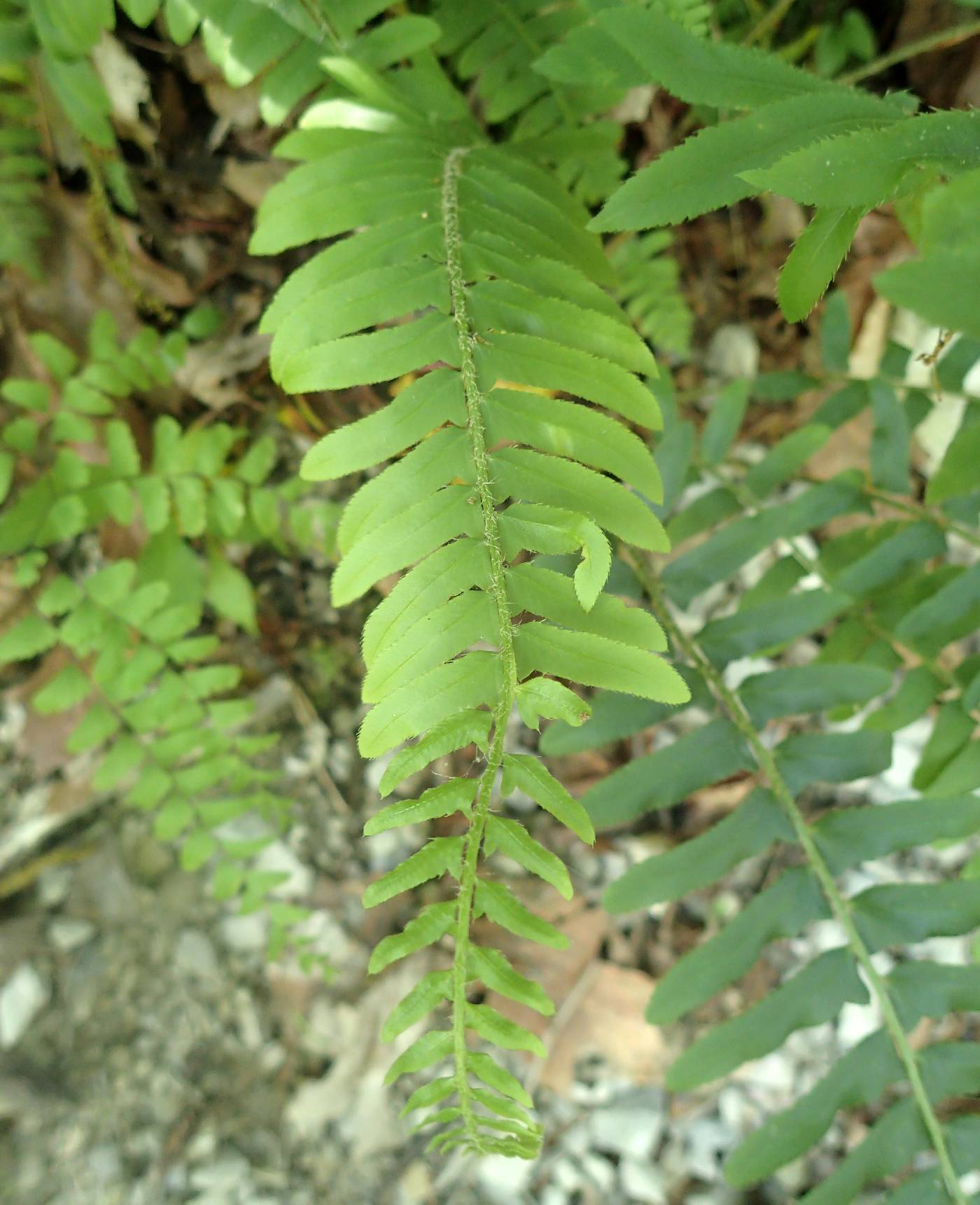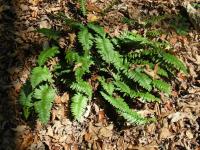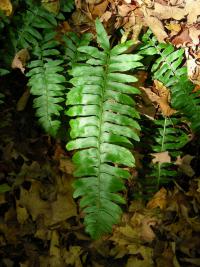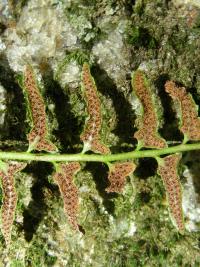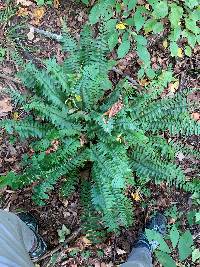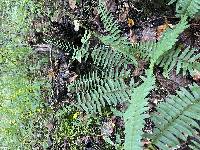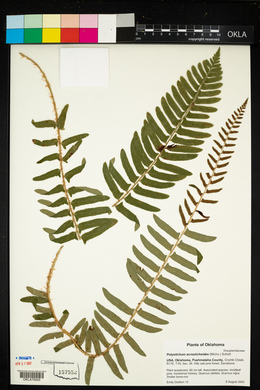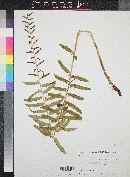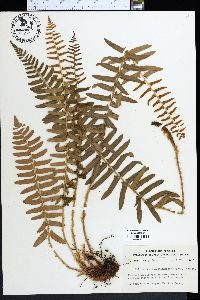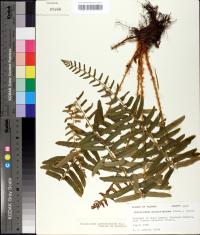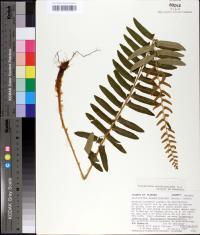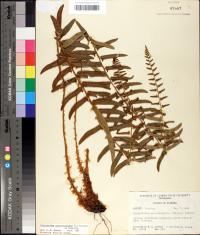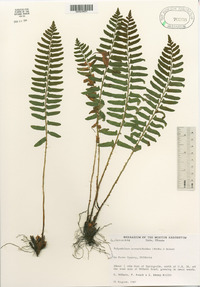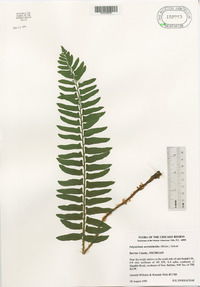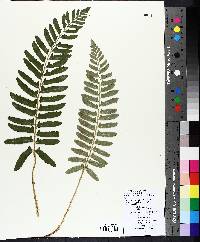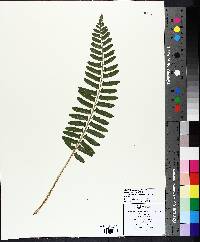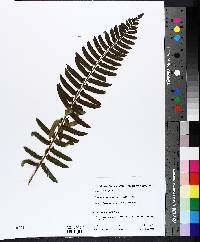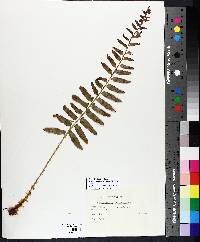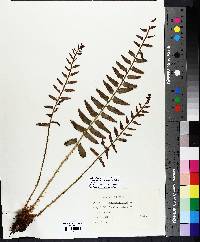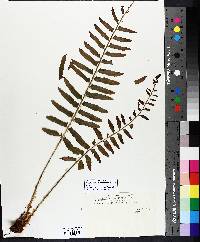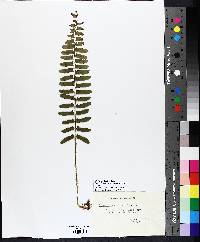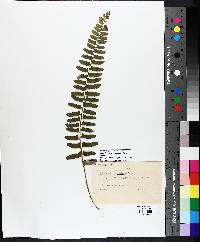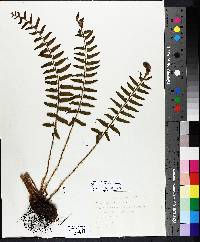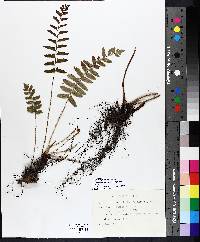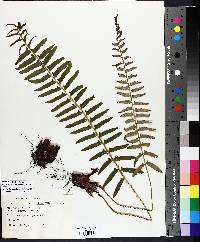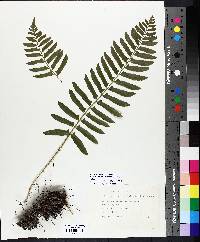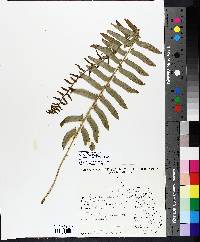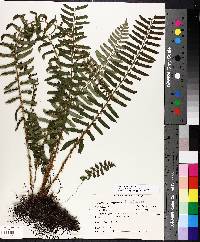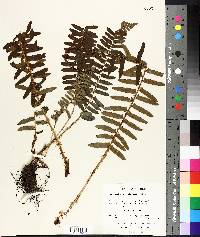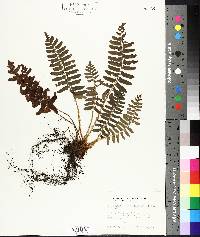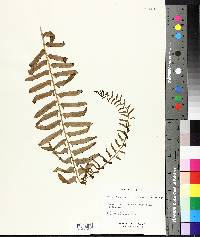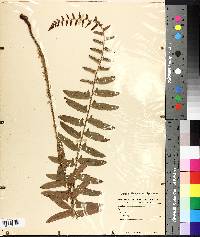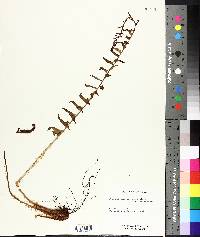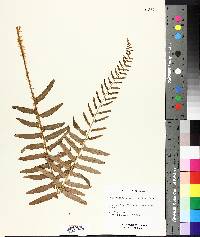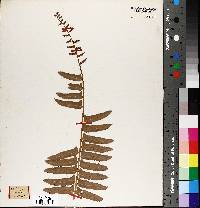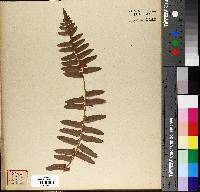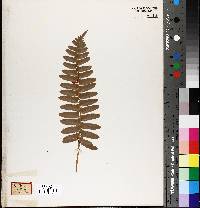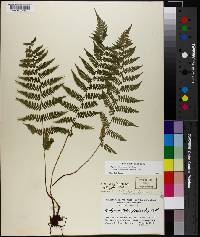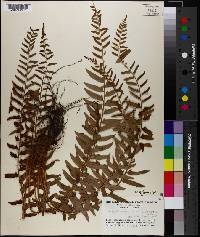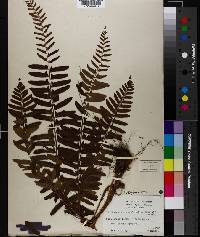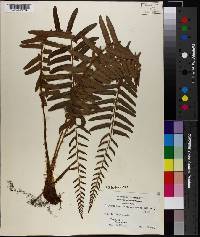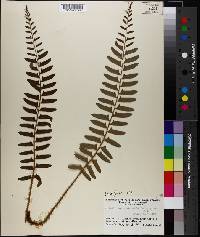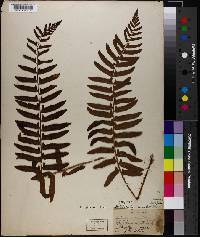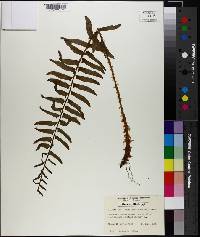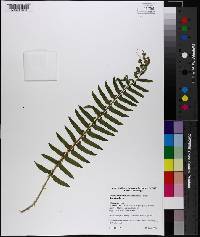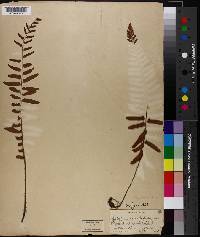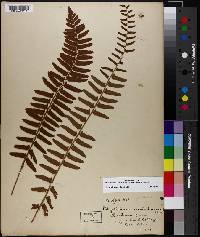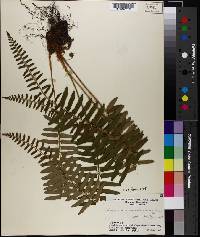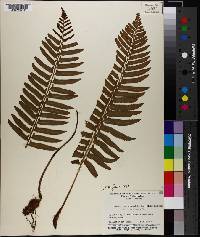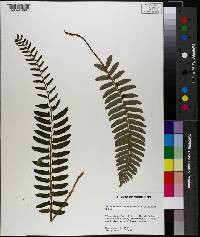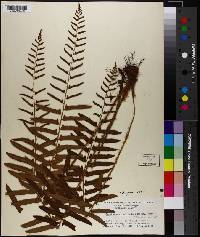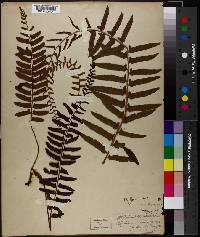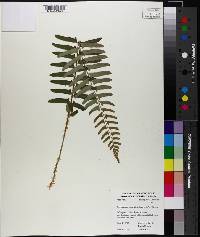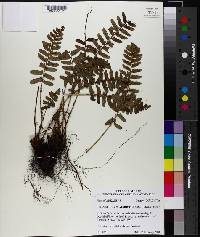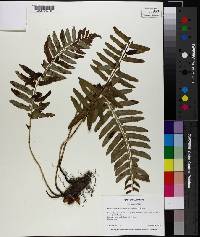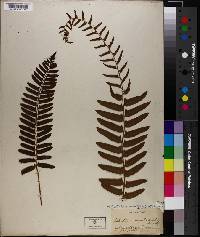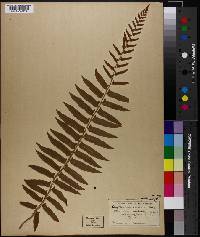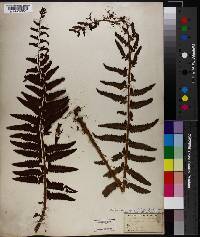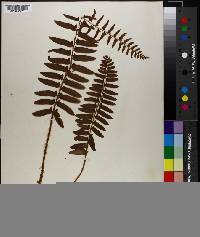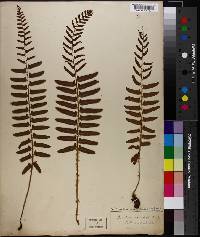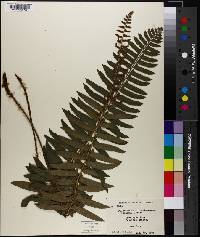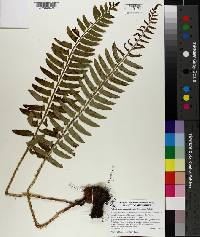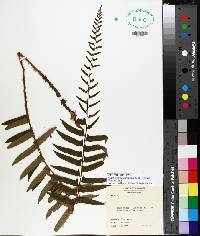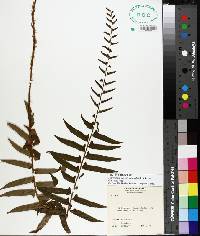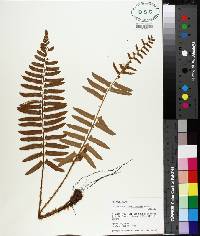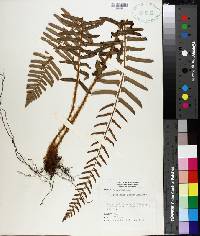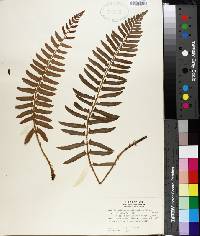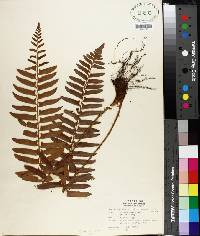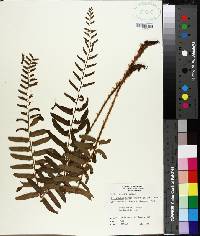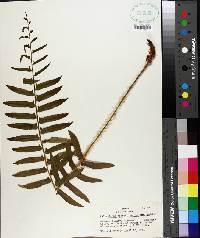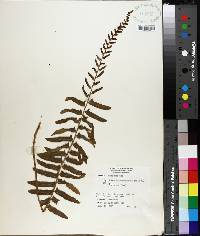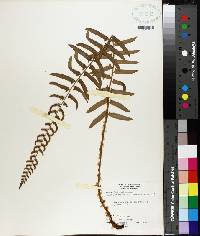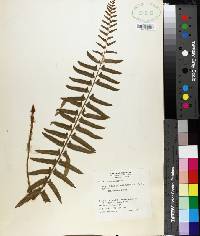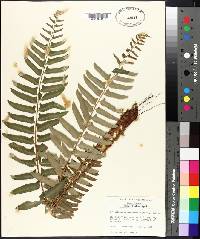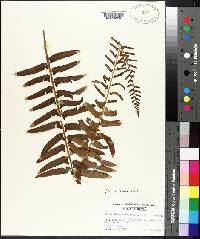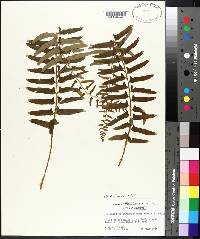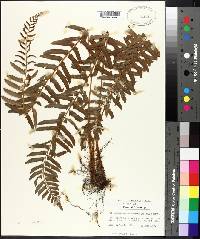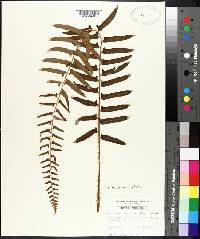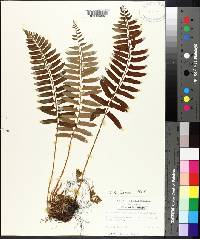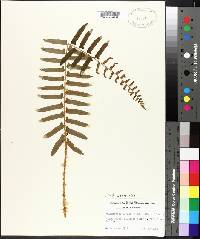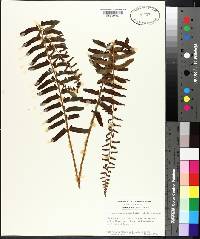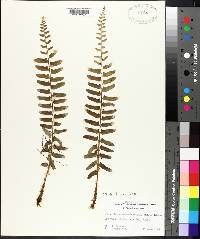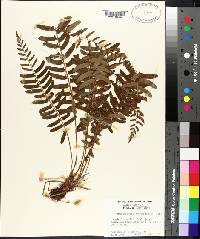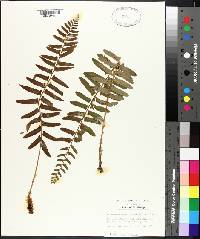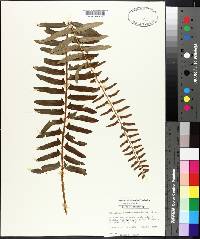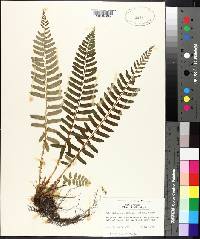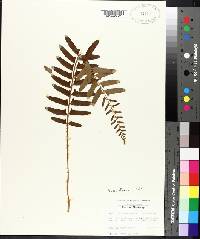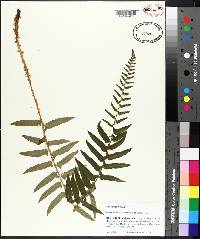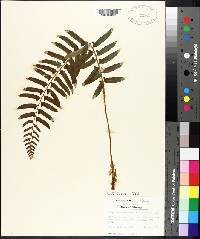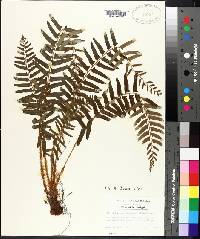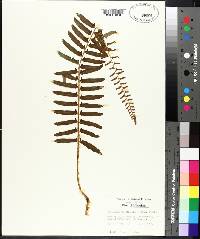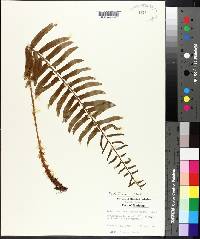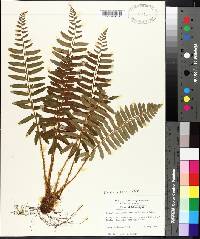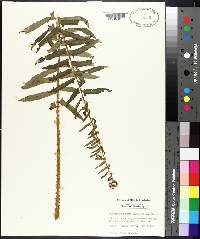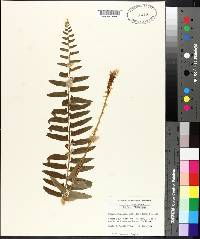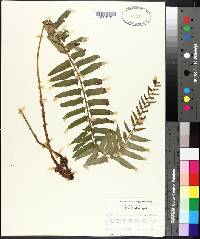Polystichum acrostichoides
|
|
|
|
Family: Dryopteridaceae
Christmas Fern
[Aspidium acrostichoides var. incisum A. Gray, moreAspidium schweinitzii Beck, Polystichum acrostichoides f. crispum Clute, Polystichum acrostichoides f. incisum (A.Gray) Gilbert, Polystichum acrostichoides f. ligulatum Gruber, Polystichum acrostichoides f. multifidum Clute, Polystichum acrostichoides f. orbiculatum Eames, Polystichum acrostichoides f. spathiforme C. F. Reed, Polystichum acrostichoides f. ventroperaferens Neidorf, Polystichum acrostichoides var. crispum Clute, Polystichum acrostichoides var. incisum A. Gray] |
Stems erect. Leaves dimorphic (only in this species); fertile pinnae distal, much contracted; sterile leaves arching, 3--8 dm; bulblets absent. Petiole 1/4--1/3 length of leaf, densely scaly; scales light brown, diminishing in size distally. Blade linear-lanceolate, 1-pinnate; base narrowed. Pinnae oblong to falcate, not overlapping, in 1 plane, 2--6 cm; base oblique, acroscopic auricles well developed; margins serrulate-spiny with teeth ascending; apex acute or blunt with subapical and apical teeth same size; microscales filiform, lacking projections, dense, on abaxial surface only. Sori confluent, completely covering abaxial surface of pinnae (only in this species); indusia entire. Spores light brown. 2 n = 82. Forest floor and shady, rocky slopes; 0--1500 m; N.B., N.S., Ont., P.E.I., Que.; Ala., Ark., Conn., Del., D.C., Fla., Ga., Ill., Ind., Iowa, Kans., Ky., La., Maine, Md., Mass., Mich., Minn., Miss., Mo., Nebr., N.H., N.J., N.Y., N.C., Ohio, Okla., Pa., R.I., S.C., Tenn., Tex., Vt., Va., W.Va., Wis.; Mexico; naturalized in Europe. Polystichum acrostichoides is a common species most closely related to P . munitum (G. Yatskievych et al. 1988), which also occurs extensively on forest floors. The dimorphic pinnae of Polystichum acrostichoides are not unique to the genus; they are found also in some Asian species. Numerous variants have been named, mostly as forms, but none are of taxonomic consequence. Hybrids are known with P . braunii ( P . × potteri Barrington) and P . lonchitis ( P . × hagenahii Cody). The latter hybrid is rare, known only from its type locality in Ontario, where it grows with both parents. It is recognized by its intermediate morphology (leaves wider than P . lonchitis , narrower than P . acrostichoides , with slightly contracted sorus-bearing pinnae) and malformed sporangia and spores. Polystichum × potteri is much more widespread, from Nova Scotia, New Brunswick, and Quebec through New England to Pennsylvania. It resembles P . braunii but has narrower leaves bearing malformed sporangia.
Perennial fern 30 - 80 cm tall Leaves: several, clustered, stalked, evergreen (remain green even in winter), dark green above, pale below, thick, leathery, 20 - 60 cm long, 5 - 12 cm wide, lance-shaped with narrowed base and pointed tip, but pinnately compound. The leaves are of two different types: sterile leaves, which are spreading or arching; and fertile leaves, which are more erect, and have the fertile, spore-bearing leaf divisions (pinnae) only beyond the middle of the leaf, and these pinnae are much narrower than the lower pinnae. Rhizome: erect and scaly. Leaf stalks: long (up to one-third length of blade), green, and with numerous light brown scales. Spores: 64 per sac, light brown, all of one kind, single-sectioned (monolete), oblong or kidney-shaped, and with inflated folds. The spores give rise to the gametophyte (the sexual phase of the plant), which is small, green, heart-shaped, hairless or often with glands or hairs, and sits above the ground. Similar species: Polystichum acrostichoides is probably most similar in appearance to Diplazium pycnocarpon, but that species has more delicately textured leaves, the edges of the leaf divisions (pinnae) are usually non-toothed (possibly very shallow round-toothed), the pinnae veins usually fork more than once, and the sori are elongate, covered by an indusium, and positioned only along veins on the pinnae underside. Some could possibly confuse this species with robust plants of Asplenium platyneuron, but that species has very dark brown or purplish and shiny leaf stalks and "midribs" (rachis), much shorter pinnae, and the base of the pinnae overlap the rachis. The most similar and closely related species to P. acrostichoides occurs along the Pacific coast of North America, P. munitum, which differs by having sori in distinct clusters, and the fertile pinnae look no differently than the sterile pinnae. Habitat and ecology: Occasional, mostly in our eastern counties in mesic woods and on wooded slopes, including old wooded dune slopes. Occurence in the Chicago region: native Notes: The common name of this species, Christmas fern, arose from the fact that the leaves remain green through winter and were often used in Christmas decorations by early settlers. This species is unique among the other North American members of the genus since the fertile pinnae differ in shape (being contracted), and their undersides are entirely covered by sori that are not in discreet clusters, but continuous. These characters also appear in some Asian species. Hybridization is very common in the genus and should be expected in large populations of mixed species. Hybrids of P. acrostichoides occur outside the Chicago Region. In the northeast, it crosses with P. braunii, a more northern species (hybrid is P. x potteri), and in Ontario it has crossed with P. lonchitis (hybrid is P. x hagenahii). Sterile hybrids in the genus can be recognized by misshapen sporangia of little black dots instead of the typical fuzzy brown bumps of dehisced sporangia that are normally produced at the end of the season. Author: The Field Museum Rhizome short-creeping; lvs 3-7.5 dm, the green petiole a fourth to two-fifths as long as the blade; blade pinnate, 5-12 cm wide, lance- linear, acuminate, not reduced at base; pinnae alternate, 20-35 pairs, linear-oblong, acute, sharply auricled at the upper base, dark green and scaleless above, paler and with hair-like scales beneath; fertile upper pinnae abruptly smaller; sori commonly in 2 rows on each side of the midrib; indusium thick, entire, blackish when dry; 2n=82. Woods and open thickets; N.S. to Wis., s. to Fla., Tex., and Mex. A hybrid with no. 2 [Polystichum lonchitis (L.) Roth] is P. بagenahii Cody. Gleason, Henry A. & Cronquist, Arthur J. 1991. Manual of vascular plants of northeastern United States and adjacent Canada. lxxv + 910 pp. ©The New York Botanical Garden. All rights reserved. Used by permission. From Flora of Indiana (1940) by Charles C. Deam This is a woodland species preferring the lower part of the slopes of deep wooded ravines. It is infrequent to rare in some of the northern counties, becoming frequent to common in the southern half of the state, especially among the hills. In protected places in the southern part of the state it is evergreen. [In forma crispum] the margins of the pinnae are crisped and ruffled. It has been found by R. M. Tryon, Jr. in Porter County. I have a specimen [of forma incisum] from Daviess County. It has, however, been reported from several other counties throughout the state. …… Indiana Coefficient of Conservatism: C = 5 Wetland Indicator Status: UPL |

